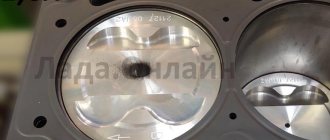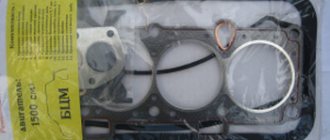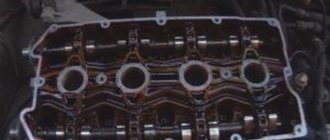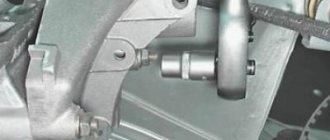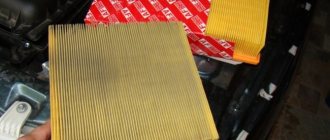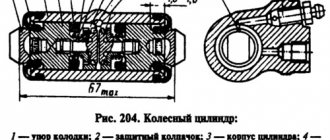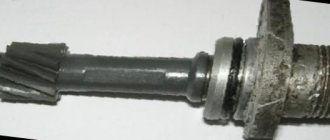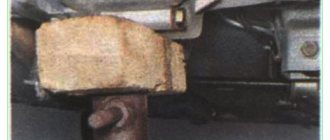Valve lapping is considered a simple technological operation of fitting the valve face chamfer to the seat. This process is relevant when repairing an old valve. Grinding is also carried out when updating the valve. During the procedure, a special paste or sandpaper with oil is applied to the valve chamfer. The whole process occurs with the help of the oscillatory movement of the knob. In parallel, the whole process continues until the gray color of the valve chamfer and seat is obtained. In a car service center, a special machine is used for the procedure, which processes 3-5 products at once. You can also perform grinding yourself without contacting specialists.
What is lapping and why do you need to lap valves?
Valve lapping is basically grinding along the surface of the valves (which allow fuel and air to flow freely) and where they meet each other. This is done by applying a special paste to the edges of the valves. The result is a perfect seal that will prevent gases from escaping while the engine is in use.
An internal combustion engine works by achieving a certain compression ratio, which differs between models, and burning an air-fuel mixture, which is compressed to a certain volume, set by the compression ratio. And if the air-fuel mixture leaks through the seat, the volume of the air-fuel mixture will change and the combustion process will not be accurate, resulting in poor engine performance.
Benefits of the procedure:
- Creates maximum seal between valve and head, which will prevent gases from escaping while the engine is running.
- The large contact area ensures heat dissipation from the valves to the head, which will prevent the valves from burning.
As a result, the entire process will lead to thinner surfaces, the elimination of minor defects, and the creation of a more reliable seal.
Pasta selection
The choice of abrasive pastes for lapping in modern stores can shock any novice driver. We won’t talk about price, since the choice for this parameter depends entirely on the capabilities and personal preferences of the buyer. Factors such as composition and grain size are more important, so they are worth considering:
- For beginners, it is better to avoid using coarse-grained pastes, otherwise the slightest mistake will lead to defects in the seat and chamfer. Medium grit is preferable when it comes to basic machining, while fine grit is needed for sanding.
- Often the equipment includes two containers with pastes with compositions of different grain sizes.
- If you didn't bother buying pasta, you can make it yourself. To do this, select sandpaper with a minimum grit level and remove the abrasive, mix the resulting powder with lubricant. Use GOI paste at the final stage to finish the surface. It should be mixed in the same way as with abrasive powder. It’s worth mentioning right away that the quality of grinding will be an order of magnitude lower than when using store-bought abrasives.
What is needed for grinding in
All lapping tools work the same way. This means that the tool is attached to the valve head, lapping compound is applied to the valve seat or surface, and the tool is rotated in different directions to ensure a firm hold.
The procedure will also require:
- kerosene;
- lapping paste;
- a spring, along the outer diameter, which passes directly into the valve seats.
Valve grinding tools
There are certain tools for grinding valves. They will be discussed below.
So, the devices that are used for grinding valves with your own hands:
- Dry cloth . Necessary for wiping treated surfaces.
- Solvent . A special product that provides high-quality cleaning of work surfaces.
- Hose and spring . The springs must have a sufficiently reduced stiffness. Their diameter is 2 or 3 millimeters, slightly larger than the diameter of the valve stem. It can be placed on a rod. You can also use a small clamp to secure it securely. You also need a short metal rod with a diameter similar to the piston rod so that it fits comfortably into the rubber hose.
- Kerosene . Used in all lapping procedures.
It is also necessary to check the grinding in thoroughly after the procedure. It is very important to carry out the procedure very efficiently.
Cylinder head grinding options
Cylinder head grinding is a delicate and time-consuming process. The best grinding is carried out in service centers at service stations, but as an option you can do it at home. Special instruments and devices are very expensive. If we take remote settlements, then it is not always possible to find a simple service station.
Basically, it can be divided into manual and mechanical grinding. Mechanical work is performed on special machines. Manual grinding of the cylinder head, although a longer procedure, requires a lot of patience and perseverance.
Valve lapping tools
The main tools for lapping valves include:
- Manual valve holder . One of the most frequently used tools. Often the holder comes complete with a special paste for grinding valves. You can also buy this tool separately at any auto parts store.
- Drill or electric screwdriver . Considering that this procedure is always performed in two directions of rotation, many prefer to use a drill. A drill that rotates in two directions at once and provides more efficient grinding. Also, for these purposes, some people choose an electric screwdriver. Its operating principle is very similar to a drill.
- Lapping paste for valves. You can buy a ready-made composition in automobile workshops. If you have some knowledge and skills, then save money and you can do it yourself.
What lapping paste to use
Our grandfathers made their own rubbing agent. They collected dust under sandpaper with a diamond wheel, and then mixed it with oil. Today, thanks to the progress and development of trade, motorists have a decent selection in specialized stores. Therefore, for beginners, a logical question arises about how to grind the valves, what paste. There is no talk about price. Here everyone chooses at their own discretion and in accordance with their capabilities. It is much more important to decide on the grain size and composition.
Very often, two tubes are included in the kit, which makes the task easier for the buyer. In stores you often find FABO paste in stylized (valve-shaped) packaging. By the way, the name is an abbreviation and stands for Finishing Anti-Friction Non-Abrasive Treatment. This paste should be used as a finishing paste after the valve has been ground in using “Classic” or “Diamond” pastes, sold in the same packaging.
In addition to the above-mentioned paste, ABRO Grinding Paste GP-201 is on sale. In this case, there will be two options in one package: coarse-grained and fine-grained. It costs much less than FABO. In addition, this paste is suitable for removing rust from any metal surface, as well as for straightening cutting tools. In a word, this paste is multifunctional. You can get medium and fine paste in one package by purchasing Done Deal. The basis here is silicon carbide powder. It is also a universal product that will come in handy around the house. And if there is a possibility and need to work with chrome surfaces, then you should pay attention to PERMATEX paste. In any case, before purchasing, it is recommended to carefully study the instructions and only then make a choice.
Now let's answer the question of what to do when there is no pasta. Sometimes there are situations when you need to grind the valves if there is no paste. Well, in this case you will have to remember the old-fashioned methods, as already mentioned above, or diversify them a little. So, if there is no dust from the diamond wheel, then you will need the finest sandpaper. You need to remove the abrasive from it and mix it with motor oil or grease. GOI paste mixed with the same lubricants is used as a finishing paste. Of course, the quality of processing with such means will be much lower. Especially when there is no relevant experience.
Valve lapping methods
This procedure can be completed quite successfully without visiting a workshop, but it does require some mechanical skills.
Manual grinding method
For maintenance purposes, valve grinding is considered a mandatory procedure. Most modern engines do not require valve lapping because they are made of aluminum, and if engine parts are damaged, the risk of valve replacement is higher. However, on the VAZ 2109 this is a necessary procedure.
So, what does lapping valves on a VAZ 2109 look like:
- You need to remove the valves from the head. They always start by removing the valves from the head. It is recommended to take advantage of this and remove any carbon deposits using a brass wire brush. Whether regrinding will be necessary depends on the condition of the head, but in this case new valves will be installed and slammed shut to create a perfect seal. Valve lapper kits may include special tools for lapping valves, and there are also options with four suction cups for different valve sizes.
- Then you need to carefully insert the valve. You should ensure that the valve is as clean as possible before applying a small amount of sanding paste to its surface. You need to insert this valve into the port it belongs to and press the appropriate suction cup onto the valve head - a little water or grease will do a good job of holding it in place.
- Identify changes in tone. Now you just need to turn the valve, rubbing it between your hands, and listen for the change in tone from the loud grinding sound. When the tone changes, you will need to lift the valve and again spread the paste over the face of the valve.
- You should continue to do this until the surface of the valve is uniformly bright and shiny with no signs of dull spots. It is important to thoroughly clean each valve and head and then reinstall the valve.
- Ready! This is all that is required to grind the valves yourself.
Grinding in valves with a drill
Using a drill for lapping is a great solution to save time and effort.
- You need to take a pre-prepared metal rod.
- A rubber hose of the same diameter should be placed on the rod. It is recommended to use a clamp for this.
- You need to fix it to a metal rod in the socket or to an electric screwdriver.
- Place the spring on the valve stem and install it on the seat.
- It is necessary to remove the valve from the cylinder head and carefully distribute the lapping paste over the entire surface of its plate.
- Insert the valve stem into the rubber hose and, if necessary, use a clamp of the same diameter for better fastening.
- Use the drill at low speed and grind the valve by moving the drill back and forth. As a result, the installed spring will be especially effective. After this, you need to turn the drill in the opposite direction until a matte surface appears on the valve body.
- After grinding in, it is necessary to wipe the valve from residual paste, preferably with a solvent. It is necessary to remove the paste not only from the valve plate, but also from its seat. There is no need to change valves, because grinding is performed for each valve individually.
How to properly lap valves using a pneumatic tool using the rotary method
Another way to lap the valve is to use a pneumatic tool. Such tools work well in removing fuel and oil contaminants. When performing this procedure, be sure to spray cleaner only into the probe tip and the holes on the sides. You can use duct tape to cover the ends of the connectors and prevent them from spraying. To use the tool, you must be connected to a source of compressed air. You need to place a suction cup of suitable size on the pin, which will then be installed on the valve plate. This is the easiest method for cleaning as it provides good results in a short period of time.
How to grind valves on a 16 valve engine using a pneumatic machine using the tapping method
Do-it-yourself valve lapping can be prone to errors. This is why it is recommended to use an air machine that will do this automatically. Do-it-yourself valve grinding is possible using a pneumatic machine. In this case, the valve will not be cleaned by rotating movements, but only by tapping. This method resembles real engine operation.
So, this is what the whole process looks like step by step:
- You need to place one of the suction cups on the rod of the device (included in the kit).
- The suction cup must be securely attached to the valve plate.
- Using the wheel you can control the operation of the tool.
- The tool has a wheel to control the speed.
- Grinding occurs through constant repetition of reciprocating movements.
This method does not require any special skills. If you have no experience, you can learn during the grinding process. In addition, this method fully guarantees high efficiency and safety. When using this machine, you don’t have to worry about the risks of damaging parts or getting hurt yourself.
By repeating the operation of the valve, the engine achieves the most precise grinding possible.
Grinding in new valves
Valve lapping is considered an integral part of engine rebuilding and must be performed even when new valves are installed to match the valve head. Accordingly, new valves may also be subject to grinding.
Is it necessary to grind the valves on a new cylinder head?
The selection of valves for a new cylinder head must be treated with special attention. You should supply quality options and not save on their purchase. In this case, you will not need to do anything. However, some still prefer to carry out grinding, but in this case it is not necessary.
Do-it-yourself valve lapping video
Below are videos with which you can perform valve grinding yourself without the help of specialists.
Let's sum it up
So, as can be seen from all of the above, lapping is a responsible, labor-intensive procedure, but extremely necessary for good engine operation, not only after repair, but also after a mileage of over 60,000 kilometers. The only question that remains unclear is whether it is necessary to grind the valves on the new head.
Regarding this case, there are two options: if the head is completely new and was purchased fully equipped, then you don’t have to grind it in. In any case, experts say that this is not necessary. However, if the head was purchased separately from the valves, then grinding will be necessary. Again, in any case, before installing it, the tightness of the fit of the plates can always be checked in a well-known way, that is, by pouring gasoline or kerosene into the cylinder head or manifolds.
How to check valve lapping
If there are defects in the valve seals and seats, the air-fuel mixture can enter the combustion chambers. This will result in reduced engine performance. Therefore, special attention should be paid to carrying out a detailed check of the perfect lapping of the valves.
During valve lapping, it is important to observe the valve seat area. This will help you understand whether further lapping of the valve is required. After the valve grinding process, the most common test method is the gasoline method. After completing the work, you need to place the valve in the exact location in the cylinder head and pour gasoline into the valve stem. Then there is a gasoline leak. If gasoline flows through the valve seat, then we can conclude that the work was not successful. If gasoline does not flow through the valve seat, then we can say that the procedure was performed correctly.
Checking valve tightness after lapping using an EGR valve
The check requires that when the engine is idling, the valve is disconnected from the hose through which the vacuum (vacuum) flows. If you have a vacuum pump, you can connect it to the valve opening. Due to this, a vacuum will be created. If there are malfunctions and problems, the engine will “suffocate” and the speed will drop sharply.
Compressor test
To ensure that the valves have been properly ground in, it is recommended to use the compressor test method. This is the fastest way. You need to measure the compression, pour about 20g of oil into the spark plug compartment and take the measurement. If the compressor performance has increased, then everything is fine with the valves.
DIY cylinder head grinding
The engine is one of the main components of a car, and the cylinder head is the heart of this component. When repairing, sanding is often necessary. We'll talk about grinding methods, reasons, preparatory work and the process.
Engine failure is not a pleasant situation, and a bent cylinder head is often the cause of failure. In this case, the first question becomes how to polish the cylinder head, since it is the cylinder head that is responsible for the quality of engine operation. What is a cylinder head? It consists of a cover that covers the cylinders and, according to the standard, is attached to the block with studs and bolts.
Everything in the cylinder head is interconnected; if one part fails, it pulls the rest along with it. Thus, it is worth looking after the engine as best as possible and carrying out repairs on time. As for grinding, it should not be carried out every time there is a breakdown, but only if irregularities appear.
What does a ground valve look like?
Valve lapping refers to the procedure to ensure proper seating for the intake and exhaust valves in the engine cylinders. Often this procedure is performed after a major engine overhaul or in case of valve renewal. The valves ensure maximum tightness in the combustion chamber, thereby guaranteeing the normal functioning of the engine and its technical characteristics, and also guaranteeing a high level of compression and efficient operation of the engine. After grinding in, there should be absolutely no lines left on the valve, and the surface should be painted over evenly and neatly. If any defects are noticed, it is recommended to carry out the grinding again.
Finally, valve lapping is one means of improving the efficiency of a car engine. As the engine improves its performance, it will improve fuel efficiency. Fuel combustion will be greatly improved.
Main Reasons for Grinding
The first and main condition for starting grinding is the uneven installation of the cylinder head gasket and its subsequent burnout. The reasons for this appearance may be overheating of the engine, the ingress of small mechanical parts, or water, which, if detonated, can damage the gasket.
The gasket itself is not so simple; it consists of several layers and a frame; it is made from perforated sheet steel. The main purpose is to seal the joints of two parts. Boiling of the engine, bubbles in the cooling system, change in oil color are the first indicators that the cylinder head gasket has become unusable.
Engine tuning is often considered the second reason for grinding. A sign of this is a decrease in engine power when you press the accelerator pedal, or simply the engine stops pulling. I would like to say right away that the process is not easy and will require the expenditure of both time and money.
Cylinder head grinding price
In many ways, the cost of such a procedure will depend on the chosen method and brand of engine. It is worth remembering that the more expensive the car and the larger the engine, the more expensive the procedure will be.
On a special machine, such a procedure will cost from 800 rubles per cylinder, manual work will be cheaper, about 500 rubles per cylinder. But it is worth remembering that if the work is not carried out by a professional, then when manually grinding the cylinder head, mistakes may be made. After a while you will need to repeat the procedure again.
Video of cylinder head grinding:
Cylinder head grinding process
Removing the cylinder head is different for each car and there is no point in describing it. But you should understand that for this you will need to drain the oil and coolant, remove everything that is in the way, and stock up on new consumables.
Having removed the cylinder head, there are many questions about how much it costs to grind it, how it should be done and how to check the result. But everything is not as scary as it seems at first glance. It would be a good idea to check the valves during grinding and replace the valve seals. This is done so that after collection you do not have to rub in the burnt valve.
To start grinding, we need a sharpening stone or something similar to remove uneven layers evenly, accurately and without bending. Next, you should take a piece of glass the size of the cylinder head and some diesel fuel, since it has the property of not drying out quickly. After a little grinding, wipe the entire surface of the cylinder head with a thin layer of diesel fuel and apply clean and dry glass. It will immediately show where there is still a gap, and where the process was overdone.
It is worth knowing that when grinding the cylinder head, the movements with the grinding stone should be smooth in the form of a zero or a figure eight, but not straight and sharp. The result should be a mirror-like and completely flat surface, after which you can safely install and assemble the engine.
Instructions
Grinding machine
It is unlikely that you will be able to carry out this process yourself, since, as you can see in the video, this requires a milling machine. However, we will still introduce you to the technology of this process so that you have an idea about it.
When the cylinder head is dismantled from the engine to the machine, the first question that arises concerns the thickness of the milling. In this case, you should familiarize yourself with the maximum repair depth of surface milling, and this is stated in the service book for your car. If you follow all the nuances of this issue, then you will not have problems with the further functioning of the motor. In addition, when you find out the required thickness, you should definitely tell the specialist who will do the milling on the machine, so that he can select the gasket of the required thickness.
We also recommend replacing the valve seals and wiping the valves themselves. It is advisable to do this before starting work so that you do not have to wipe the burnt elements afterwards. It should also be noted that this will increase the engine power, and it is not at all necessary to buy new elements; it is quite possible to use old ones. Of course, if their condition is not sad.
It is also necessary to clean the inner surface of the cylinder head from gasket residues. This is done using a regular knife or sharpening stone. Please note that the movements you make to remove any remaining gasket should be in a zero or figure eight shape. They should also be smooth. When all the residue is removed, you will be able to see how warped the head is, so you need to process the cylinder head until all the uneven areas are corrected. As a result, you should get the most even and mirror-like plane of the assembly as possible, which will ensure the most maximum compaction.
As you understand, this process is unlikely to be carried out properly at home, so we advise you to seek help from professionals.
How to grind a cylinder head with your own hands
Grinding the cylinder head is an operation that is performed during a major overhaul of the internal combustion engine, engine overhaul, etc. Also, the need to grind the head may arise when the so-called “iron” tuning of the internal combustion engine is carried out, changes and modifications are made to the engine design in order to boost the power unit, the engine compression ratio is increased by reducing the height of the head, etc.
As you know, the cylinder head (cylinder head) is one of the main components of the engine. The head of a modern power unit contains a timing belt, the head itself fits tightly to the cylinder block (BC) through the cylinder head gasket, part of the combustion chamber is made in the head housing, and the channels of the engine lubrication and cooling system also pass through. For this reason, for the best fit, it is necessary to grind the cylinder head; in parallel with grinding the cylinder head, in some cases the surface of the cylinder block is also grinded. Next we will talk about how the cylinder head is ground, as well as how to perform this operation yourself.
Grinding the cylinder head in a garage: expectations and realities
Every experienced motorist who has ever dealt with repairing a cylinder head knows that this part is one of the most specific parts of a car. Actually, it is this node that our material is devoted to. Today we will tell you how to grind a cylinder head at home with a video, when it is needed and what needs to be taken into account before starting work.
